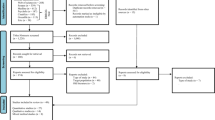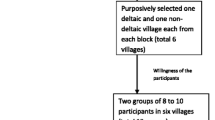Abstract
Research shows that low-income communities of color are disproportionately exposed to environmental hazards and that children are particularly susceptible to environmental risks due to their developing physiology. This chapter describes a collaborative studyinvolving researchers and Detroit Head Start parents to examine the impact of environmental hazards on their children’s well-being through a method called Photovoice. Using Photovoice, a participatory research methodology through which participants photodocument how the environment affects the health of their families and community, Head Start parents identified hazards in the physical environment, including abandoned buildings and vacant plots that had become illegal dumping grounds, as well as strengths within their community. Through this process, parents gained a better understanding of the environmental risks in the area as well as an insight into appropriate community strategies to address these concerns. Environmental justice training complemented the Photovoice project so that parents could further increase their awareness and advocacy skills, and ultimately take action against these imposing hazards.
Access this chapter
Tax calculation will be finalised at checkout
Purchases are for personal use only
Similar content being viewed by others
References
Anderton, D.L., A.B. Anderson, J.M. Oakes, and M.R. Fraser. 1994a. “Environmental equity: The demographics of dumping.” Demography, 31: 229–248.
Anderton, D.L., A.B. Anderson, P.H. Rossi, J.M. Oakes, M.R. Fraser, E.W. Weber, and E.J. Calabrese. 1994b. “Hazardous waste facilities: ‘Environmental equity’ issues in metropolitan areas.” Evaluation Review, 18(2): 123–140.
Bearer, C. 1995. “Environmental health hazards: How children are different from adults.” Critical Issues for Children and Youths, 5(2): 11–26.
Been, V. 1994. “Locally undesirable land use in minority neighborhoods: Disproportionate sitting or market dynamics.” The Yale Law Journal, 103(6): 1383–1422.
Been, V. 1995. “Analyzing evidence of environmental justice.” Journal of Land Use and Environmental Law, 11: 1–37.
Been, V. and F. Gupta. 1997. “Coming to the nuisance or going to the barrios? A longitudinal analysis of environmental justice claims.” Ecology Law Review, 24: 1–56.
Boer, J.T., M. Pastor, Jr., J.L. Sadd, and L.D. Snyder. 1997. “Is there environmental racism? The demographics of hazardous waste in Los Angeles County.” Social Science Quarterly, 78: 793–810.
Brooks-Gunn, J. and G.J. Duncan. 1997. “The effects of poverty on children. The future of children.” Children and Poverty, 7(2): 55–71.
Brown, L.D. 1991. “Bridging organizations and sustainable development.” Human Relations, 44: 807–831.
Brown, L.D. and R. Tandon. 1993. Multiparty collaboration for development in Asia. New York, NY: United Nations Development Programme.
Burke, L.M. 1993. “Race and environmental equity: A geographic analysis in Los Angeles, CA.” Journal of Geographical Information Systems, 3(9): 44–50.
Capaldi, D.M. and G.R. Patterson. 1994. “Interrelated influences of contextual factors on antisocial behavior in childhood and adolescence for males.” pp: 165–198. In Progress in experimental personality and psychopathology research. Edited by D.C. Fowles, P. Sutker, and S.H. Goodman. New York, NY: Springer.
Carr, W. and S. Kemmis. 1986. Becoming critical. Education, knowledge and action research. Lewes: Falmer.
DiPerna, P. 1985. Cluster mystery: Epidemic and the children of Woburn, Mass. St. Louis, MO: Mosby.
Dryfoos, J.G. 1990. Adolescents at risk: Prevalence and prevention. New York: Oxford University Press.
Evans, G.W. and E. Kantrowitz. 2002. “Socioeconomic status and health: The potential risk of environmental risk exposure.” Annual Review of Public Health, 23: 303–331.
Faber, D.R. and E.J. Krieg. 2002. “Unequal exposure to ecological hazards: Environmental injustices in the commonwealth of Massachusetts.” Environmental Health Perspectives, 110(2): 277–289.
Gaventa, John. 1998. “Participatory research in North America.” Convergence, 24(2–3): 19–28.
Gelobter, M. 1987. The distribution of outdoor air pollution by income and race, 1970–1984. Master’s Thesis, Energy and Resource Group. Berkeley, CA: University of California.
Gelobter, M. 1992. “Toward a model of environmental discrimination.” pp: 64–81. In Race and the incidence of environmental hazards: A time for discourse. Edited by B. Bryant and P. Mohai. Boulder, CO: Westview.
Goldman, B. 1994. Not just prosperity: Achieving sustainability with environmental justice. Commissioned for the National Wildlife Federation Corporate Conservation Council Synergy ’94 Conference.
Graziano, K. 2004. “Oppression and resiliency in a post-apartheid South Africa: Unheard voices of black gay men and lesbians.” Cultural Diversity and Ethnic Minority Psychology, 10(3): 302–316.
Hammen, C. and K.D. Rudolph. 1996. “Childhood depression.” In Treatment of childhood disorders. Edited by E.J. Mash and R.A. Barkley. New York, NY: Guilford Press.
Hockman, E. and C. Morris. 1998. “Progress towards environmental justice: A five-year perspective of toxicity, race and poverty in Michigan, 1990–1995.” Journal of Environmental Planning and Management, 41: 157–176.
Huston, A.C., V.C. McLoyd, and C. Garcia-Coll. 1994. “Children and poverty: Issues in contemporary research.” Child Development, 65: 275–282.
Israel, B., A. Schultz, E. Parker, and A. Becker. 1998. “Review of community-based research: Assessing partnership approaches to improve public health.” Annual Review of Public Health, 19: 173–202.
LeClerc, C., D. Wells, D. Craig, and J. Wilson. 2002. “Falling short of the mark. Tales of life after hospital discharge.” Clinical Nursing Research, 11(3): 242–263.
Lopez, R. 2002. “Segregation and black/white differences in exposure to air toxics in 1990.” Environmental Health Perspectives, 110(2): 289–297.
Lopez, E., E. Eng, R. Randall-David, and N. Robinson. 2005. “Quality-of-life concerns of African American breast cancer survivors within rural North Carolina: Blending the techniques of photovoice and grounded theory.” Qualitative Health Research, 15(1): 99–115.
McAllister, C., P. Wilson, G.B. Patrick, and J. Baldwin. 2005. “Come and take a walk: Listening to early head start parents on school-readiness as a matter of child, family and community health.” American Journal of Public Health, 95(4): 617–625.
McLoyd, V.C. 1998. “Socioeconomic disadvantage and child development.” American Psychologist, 53(2): 185–204.
Mohai, P. and B. Bryant. 1992. “Environmental racism: Reviewing the evidence.” pp: 163–246. In Race and the incidence of environmental hazards: A time for discourse. Edited by B. Bryant and P. Mohai. Boulder, CO: Westview.
Morris, C.M. and E.M. Hockman. 1997. A multivariate analysis of the relationship among pollution, ethnicity, poverty, and public health in Michigan, 1990–1996. ACSP 1997 Annual Conference. Fort Lauderdale, FL. November 6–9.
Pollitt, E. and K. Gorman. 1994. “Nutritional deficiencies as developmental risk factors.” In Threats to optimal development: Integrating biological, psychological, and social risk factors. The Minnesota Symposium on child psychology. Volume 27. Edited by C.A. Nelson. Hillsdale, NJ: Lawrence Erlbaum Associates.
Pulido, L. 1996. Environmental and economic justice: Two Chicano struggles in the southwest. Tucson, AZ: University of Arizona Press.
Riley, R. and E. Manias. 2004. “The uses of photography in clinical nursing practice and research: A literature review.” Journal of Advanced Nursing, 48(4): 397–405.
Sadd, J.L., M. Pastor, Jr., J.T. Boer, and L.D. Snyder. 1999. “Every breath you take… The demographics of toxic air releases in southern California.” Economic Development Quarterly, 13(2): 107–123.
Strack, R.W., C. Magill, and K. McDonagh. 2003. “Engaging youth through photovoice.” Health Promotion Practice, 5(1): 49–58.
Tatum, B. 1994. “Teaching white students about racism: The search for white allies and the restoration of hope.” Teachers College Record, 95: 462–476.
United Church of Christ Commission for Racial Justice. 1987. Toxic waste and race in the United States: A national report on the racial and socio-economic characteristics of communities with hazardous waste sites. New York: Public Data Access, Inc.
U.S. Census. 2000. Demographic profiles. Washington, DC: U.S. Census Bureau.
Wang, C.C. 1999. “Photovoice: A participatory action research strategy applied to women’s health.” Journal of Women’s Health, 8(2): 185–192.
Wang, C.C. and M. Burris. 1997. “Photovoice: Concept, methodology, and use for participatory needs assessment.” Health Education and Behavior, 24(3): 369–387.
Wang, C., M. Burris, and Y.P. Xiang. 1996. “Chinese village women as visual anthro-pologists: A participatory approach to reaching policymakers.” Social Science and Medicine, 42: 1391–1400.
Wang, C.C, K.Y. Wu, W.T. Zhan, and K. Carovano. 1998. “Photovoice as a participatory health promotion strategy.” Health Promotion International, 13(1): 75–86.
Wang, C.C., J. Cash, and L.S. Powers. 2000. “Who knows the streets as well as the homeless?: Promoting personal and community action through photovoice.” Health Promotion Practice, 1(1): 81–89.
Wang, C.C., S. Morrel-Samuels, P. Hutchison, L. Bell, and R.M. Pestronk. 2004. “Flint photovoice: Community-building among youth, adults, and policy makers.” American Journal of Public Health, 94(6): 911–913.
Werner, E.E. and R.S. Smith. 1992. Overcoming the odds: High risk children from birth to adulthood. Ithaca, NY: Cornell University Press.
West, P.C., L. Fly, and R. Marans. 1992. “Minority anglers and toxic fish consumption: Evidence from a State Wide Survey of Michigan.” In race and the incidence of environmental hazards: A time for discourse. Edited by B. Bryant and P. Mohai. Boulder, CO: Westview Press.
Author information
Authors and Affiliations
Corresponding author
Editor information
Editors and Affiliations
Rights and permissions
Copyright information
© 2011 Springer Science+Business Media, LLC
About this chapter
Cite this chapter
Spencer, M.S., Garratt, A., Hockman, E., Bryant, B., Kohn-Wood, L. (2011). Environmental Justice and the Well-being of Poor Children of Color. In: Burton, L., Matthews, S., Leung, M., Kemp, S., Takeuchi, D. (eds) Communities, Neighborhoods, and Health. Social Disparities in Health and Health Care, vol 1. Springer, New York, NY. https://doi.org/10.1007/978-1-4419-7482-2_12
Download citation
DOI: https://doi.org/10.1007/978-1-4419-7482-2_12
Published:
Publisher Name: Springer, New York, NY
Print ISBN: 978-1-4419-7481-5
Online ISBN: 978-1-4419-7482-2
eBook Packages: Humanities, Social Sciences and LawSocial Sciences (R0)




